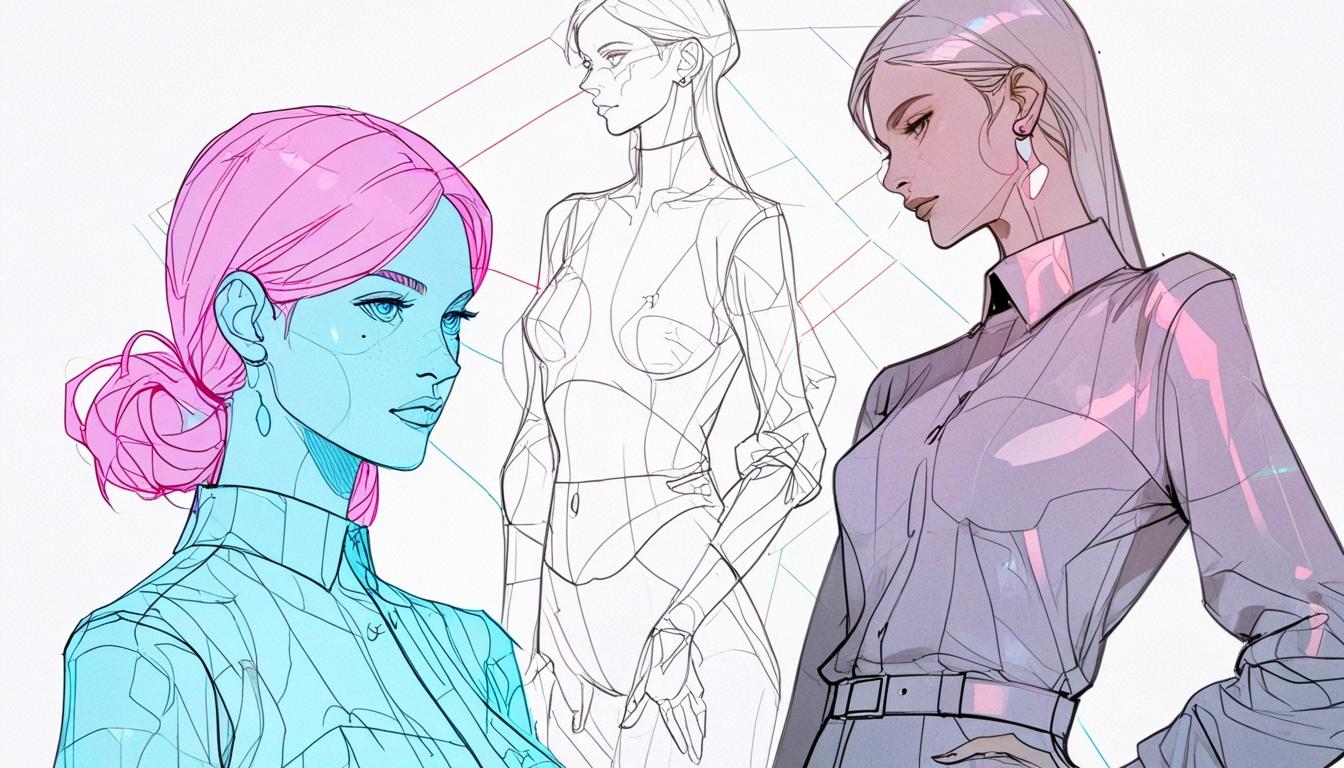The fashion industry, renowned for its constant evolution, finds itself at a pivotal crossroads with the rapid emergence of artificial intelligence (AI) in modelling. As brands increasingly turn to AI-generated models, concerns about the implications for human creativity, diversity, and authentic representation in fashion are mounting.
H&M’s recent campaign featuring AI models stirred significant debate, with many describing it as an unsettling glimpse into a future that might sacrifice genuine human expression for digitally constructed perfection. Initially perceived as a captivating technological novelty, the reality of AI’s role in fashion is resonating uncomfortably within the community, from professional models to industry veterans. Paul W Fleming, General Secretary of Equity, the UK trade union for fashion models, articulates a growing anxiety: "As we move forward with generative AI, it is vital that models and other creative workers retain full control over their likeness and are paid fairly for its usage." The push for enhanced rights is underscored by mounting evidence that many AI systems employ data sourced without consent, raising ethical concerns around intellectual property and workplace rights.
The allure of AI is undeniable; brands can exploit these digital entities without incurring the costs associated with human models, such as travel and styling teams. Yet this efficiency poses a significant threat to human professionals whose livelihoods depend on their artistry. An anonymous international model expressed her dismay at the digital encroachment, lamenting the loss of the emotional connection integral to fashion shoots. "Fashion is about more than just aesthetics; it's about emotion, energy, storytelling," she stated. This sentiment highlights the human element that AI struggles to replicate—an integral factor that enriches the narrative of fashion itself.
Echoing her resolve, celebrated model Saskia de Brauw publicly defended the irreplaceable nature of human involvement in modelling. On social media, she emphasised that "Modelling is a human endeavour; it requires skill, practice, collaboration, and emotion to truly exist." Her stance underscores a broader resistance within the industry, advocating for a collaborative spirit over a profit-driven push towards automation. The call for solidarity among models comes not just from a desire to preserve their craft, but from an awareness that a rush to exploit AI can dilute the narratives and identities that real models bring to fashion.
On the other hand, some proponents of AI suggest it may foster greater diversity. AI models can represent various races, genders, and body types, potentially leading to more inclusive fashion representations. Insights from recent discussions reveal that AI could cater to a broader array of demographics, thus combating the stereotype of a singular beauty standard. However, critics argue that the use of AI as a mere simulation of diversity falls short of true representation, often perpetuating existing biases rather than dismantling them.
Despite such potential benefits, the ethical ramifications of deploying AI models remain pressing. There’s a fear that companies may turn to these digital alternatives as a cover for neglecting genuine diversity initiatives. The focus on cost-saving rather than authenticity threatens to erode the very foundations of ethos in fashion.
Luca Arrigo, CEO and Co-Founder of BetterGroup, proposes a more balanced perspective. He likens AI to Photoshop—initially met with skepticism, yet ultimately embraced as a tool to augment creative expression. While he emphasises the potential for AI to elevate the roles of both digital and human models, Arrigo acknowledges that this must be underpinned by stringent ethical standards and regulations. "Models must have control over the images shared and the products they endorse. Collaboration is essential," he insists, reflecting a growing recognition within the tech community that the relationship between AI and human creativity must be symbiotic rather than adversarial.
As the fashion industry traverses this uncharted territory, it is critical that stakeholders engage in a vital discussion about the implications of AI on artistry, authenticity, and inclusivity. If approached thoughtfully, AI could indeed serve as a complement to human creativity rather than a replacement. Ultimately, the essence of fashion—the celebration of beauty, individuality, and human connection—must not be overshadowed by the inexorable advance of technology. There remains a profound truth: no algorithm can encapsulate the spirit that makes fashion a uniquely human endeavour.
Reference Map
- Paragraphs 1, 2, 5, 6
- Paragraph 3
- Paragraph 4
- Paragraphs 8, 9
- Paragraph 7
- Paragraph 10
- Paragraph 11
Source: Noah Wire Services
